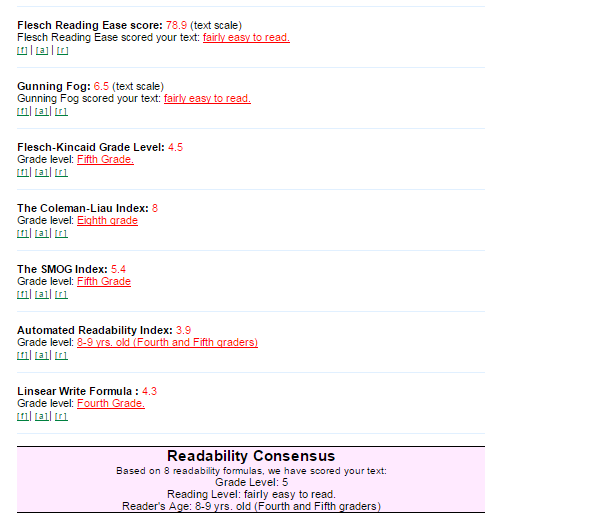 Recently, I started putting Readability Statistics in my posts (like in this one). Let me explain why.
Recently, I started putting Readability Statistics in my posts (like in this one). Let me explain why.
I’ve been singing the gospel of Readability Statistics for quite some time. I encourage all of my clients and students to do a readability test on everything they write.
That’s because there is no easier and cheaper way to increase a reader’s ability to understand what you’re saying than by writing at an eighth grade level or below. (This post explains why.)
When I work with a nonprofit, I always start by running their Vision and Mission Statements through a reading ease test and The Wordifier. I also do this before a meeting with a potential client, too. Gives me a sense for where they’re at.
I have found that most nonprofits write at a much higher level. Often a level that would require one to have a PhD. Since only 1.68% of Americans over the age of 25 have a PhD, that means a lot of potential donors, volunteers, staff and board members have no clue what you’re saying. #Bummer
I’m hoping that, over time, nonprofits in general, and readers of this blog in particular, will get in the habit of checking the readability of their writing. It’s cheap, easy and effective.
I figure if you see Reading Stats for each post, it’ll up the odds that you might give it a go.
My theory is: the more you see it, the more it’ll be on your radar. And, eventually (hopefully!), you won’t be able to resist finding out whether your writing is attracting as many donors, supporters and volunteers as possible to your work. Cuz who doesn’t want that?!
Post Readability Stats: Reading Ease 66.3, Grade Level 7.8
***Claxon University–where smart nonprofits learn how to use better words to create a better world.***
 Venustate: to make beautiful; improve
Venustate: to make beautiful; improve








